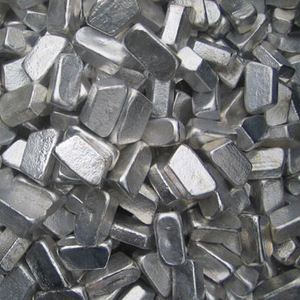Lead and its alloys are among the most widely used non-ferrous metals in industrial manufacturing. Known for their versatility, corrosion resistance, and density, these materials play a key role in batteries, paints, cables, and heavy machinery. This article explains the importance of red lead, lead alloys like tin lead alloy and copper lead alloy, and highlights the role of refined lead and red lead manufacturers in the industrial supply chain.
What is Red Lead?
Red Lead (Pb₃O₄), also called Lead Tetroxide, is a bright red or orange-colored powder derived from pure or refined lead. It is one of the oldest and most valuable chemical compounds in industrial use.
Key Properties:
- High density and stability
- Excellent corrosion resistance
- Strong coloring pigment
Applications of Red Lead:
- Used as an anti-corrosive primer in painting iron and steel structures
- Important material in lead-acid batteries
- Used in glass, rubber, and ceramic manufacturing
- Employed in protective coatings for pipelines and marine equipment
Red lead manufacturers follow strict refining and oxidation processes to ensure consistent quality and accurate chemical composition for industrial applications.
Role of Red Lead Manufacturers
Leading red lead manufacturers refine pure lead through oxidation in a controlled furnace environment. The process ensures high-quality output with uniform color and particle size.
Steps Involved:
- Refining lead: Pure or refined lead is first purified to remove impurities.
- Oxidation: The lead is oxidized at a specific temperature to form red lead oxide.
- Cooling and grinding: The powder is cooled, milled, and packed for industrial use.
High-grade red lead is crucial for industries that require durability and superior corrosion resistance.
Understanding Lead Alloys
Lead alloys are mixtures of lead with other metals such as tin, copper, or antimony to enhance their physical and mechanical properties. These alloys combine the flexibility of lead with the strength and conductivity of other elements, making them suitable for various industrial applications.
Common Types of Lead Alloys:
- Tin Lead Alloy
- Copper Lead Alloy
Tin Lead Alloy
A tin lead alloy is formed by combining tin (Sn) and lead (Pb) in different ratios, such as 60/40 or 63/37. This alloy is most popular in soldering applications due to its low melting point and excellent conductivity.
Applications:
- Electrical and electronic soldering
- Plumbing and metal joining
- Circuit board assembly
Advantages:
- Smooth flow during soldering
- Strong and reliable joints
- Excellent heat and electrical conductivity
Tin lead alloys are essential in the electronics industry for reliable, long-lasting connections.
Copper Lead Alloy
Copper lead alloy is a combination of lead and copper that enhances mechanical strength, wear resistance, and thermal conductivity.
Applications:
- Bearings and bushings in automotive and machinery
- Heavy electrical components
- Industrial casting and lining materials
Benefits:
- High load-bearing capacity
- Reduced friction and good machinability
- Long operational life
This alloy is particularly valuable in environments where both strength and lubrication are required.
Refined Lead: The Foundation of Quality
Refined lead serves as the base metal for manufacturing red lead and various lead alloys. It is produced through the purification of raw or recycled lead to achieve 99.97%–99.99% purity levels.
Uses of Refined Lead:
- Battery manufacturing
- Chemical and pigment industries
- Cable sheathing and radiation shielding
The quality of refined lead directly affects the performance of all downstream lead products, making it a critical material for manufacturers.
Conclusion
From red lead manufacturers producing high-grade protective pigments to lead alloy producers crafting materials like tin lead alloy and copper lead alloy, the lead industry plays a vital role in modern manufacturing. The use of refined lead ensures quality, reliability, and durability across applications—from batteries to coatings and heavy machinery.

